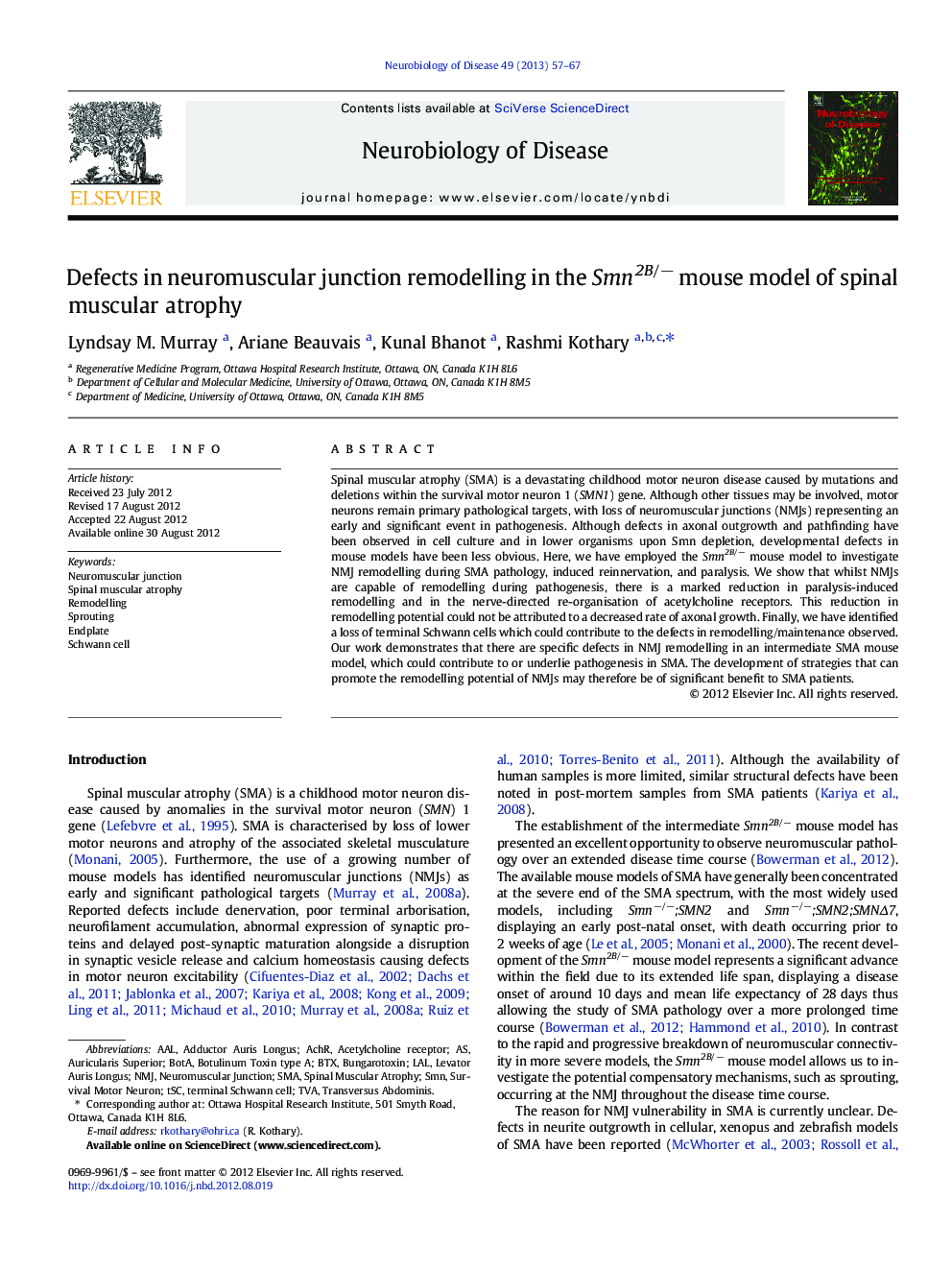| Article ID | Journal | Published Year | Pages | File Type |
|---|---|---|---|---|
| 6022393 | Neurobiology of Disease | 2013 | 11 Pages |
Spinal muscular atrophy (SMA) is a devastating childhood motor neuron disease caused by mutations and deletions within the survival motor neuron 1 (SMN1) gene. Although other tissues may be involved, motor neurons remain primary pathological targets, with loss of neuromuscular junctions (NMJs) representing an early and significant event in pathogenesis. Although defects in axonal outgrowth and pathfinding have been observed in cell culture and in lower organisms upon Smn depletion, developmental defects in mouse models have been less obvious. Here, we have employed the Smn2B/â mouse model to investigate NMJ remodelling during SMA pathology, induced reinnervation, and paralysis. We show that whilst NMJs are capable of remodelling during pathogenesis, there is a marked reduction in paralysis-induced remodelling and in the nerve-directed re-organisation of acetylcholine receptors. This reduction in remodelling potential could not be attributed to a decreased rate of axonal growth. Finally, we have identified a loss of terminal Schwann cells which could contribute to the defects in remodelling/maintenance observed. Our work demonstrates that there are specific defects in NMJ remodelling in an intermediate SMA mouse model, which could contribute to or underlie pathogenesis in SMA. The development of strategies that can promote the remodelling potential of NMJs may therefore be of significant benefit to SMA patients.
⺠Neuromuscular junction remodelling in Spinal Muscular Atrophy model mice was assessed. ⺠The capacity for sprouting following botulinum induced paralysis was reduced. ⺠The rate of axon growth during nerve regeneration was unchanged. ⺠There is a decrease in nerve directed reorganisation of acetyl choline receptors. ⺠There is a loss of terminal Schwann cells from the neuromuscular junction.
